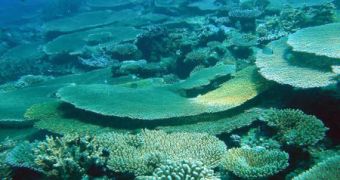Coral reefs throughout the world are currently endangered by a myriad of human activities, including extensive and unsustainable fishing, pollution, climate change and ocean acidification. According to scientific estimates, most coral species could soon go extinct altogether, especially considering that rising sea levels put the reefs in direct competition with sand and seaweeds, a race that no coral can win. Fortunately, oceanologists uncovered a new coral species that may be part of the solution.
The staghorn coral offspring, discovered in several reefs across the Pacific, have unusual traits that differentiate them from other staghorns. Namely, they are not the product of breeding within the same species, but rather the result of cross-breeding between several, very rare coral species. In this light, the appearance of the newest member of the family could be linked to nature's way of answering the challenge that global warming poses.
The new staghorn hybrid coral might prove to be more resilient to ambient changes, due to its natural genetic diversity, reef experts say. This means that rising water temperatures could no longer be an issue for the reefs and that they could finally begin to regenerate. But the problem is that, although this species of coral may prove invaluable to the survival of the species, sand still remains a gruesome problem for the reefs, one that is not likely to go away very soon.
This discovery may hold the key to understanding exactly how reefs adapt to the changes in their habitat. Some experts argue that they have been expecting something like this, namely a mutation to occur naturally inside a threatened species, which could be capable of rescuing the respective species, or at least, some parts of it.
Nature has adopted this method of survival in the past, where the few specimens of various animals that remained on the planet after an extinction event were completely equipped with genetic traits to spawn numerous other similar species. It remains to be seen whether this will also be the case with the reefs.

 14 DAY TRIAL //
14 DAY TRIAL //